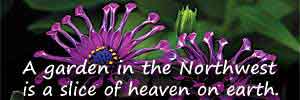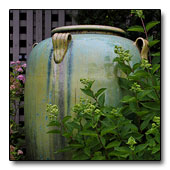
The Storrar Garden Story
Debbie Teashon
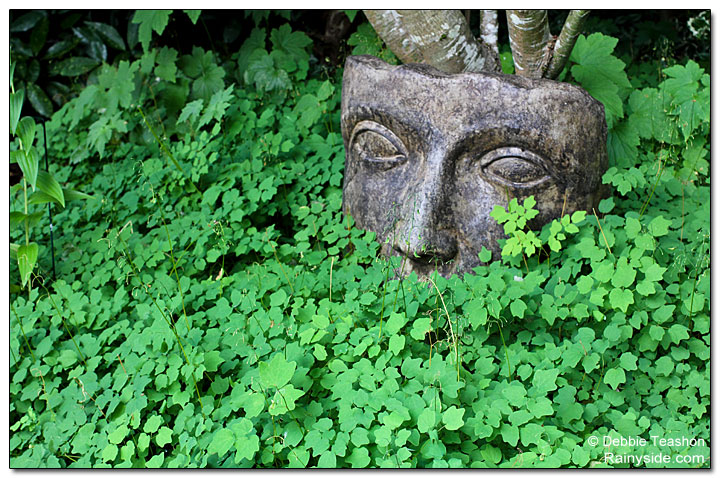
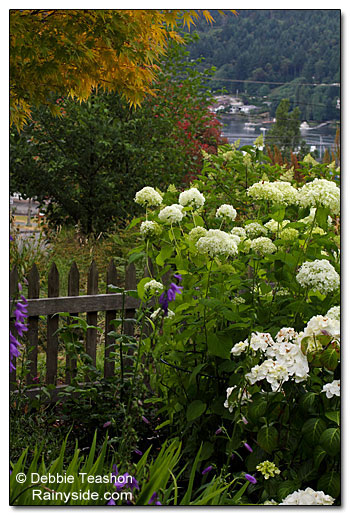
(Above right)The view overlooks Gig Harbor.
(Above center) Vancouveria hexandra (inside-out flower) surrounds a large concrete face in the garden.
When a couple lives in the oldest known surviving home in Gig Harbor and has a partnership in the creation of a garden together, great things come from it. When Cindy and Dave Storrar moved into their home overlooking the harbor in 1998, they began their garden immediately.
Cindy reminisced about their first year in the house. "There was nothing in the garden, except grass and a plum tree in the back, and of course, the fir trees were here." One of their first projects, they installed a French drain to take care of the drainage problems. Cindy chuckled when she said, "We had a hill full of springs."
"We are really in partnership with this garden," Cindy said. "I do a lot of the design, and Dave does a lot of the hard labor. He also has a good eye for plant material." Both of them agreed that it takes each of them about 10-12 hours a week to maintain the garden.
In the 1950s, the house was removed from its original site near Kimball Drive, to Pioneer Way, to make way for an overpass. When they purchased the home in its new location Dave and Cindy built the gardens up around the house. Their designs visually anchor the home to the property, where it's hard to imagine the house had migrated from another location.
"We love being out there," Cindy said about working in the garden. "It's a stress reliever, and piece of mind. We can be out there for hours. Sometimes we have to remember to go in and eat. We do love it, because for us it's not a chore. Dave just retired, so he's able to have more time to do some of the projects that he's wanted to do."
The garden has some eclectic elements to it — from formal knot gardens to more casual plantings in other areas. Yet when you tour the garden, there are cohesive elements that take you from one area to the next.
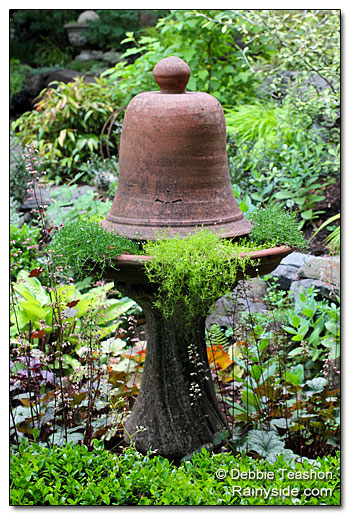
For height in a garden bed, a cloche sits on top of the birdbath and adds an appealing touch of whimsy.
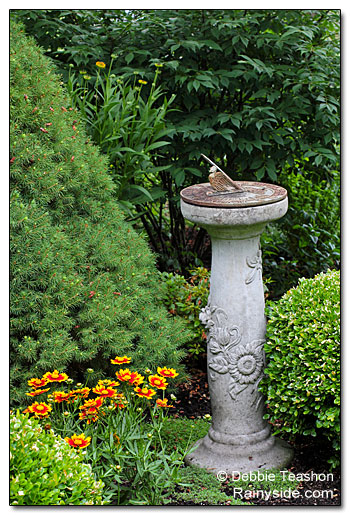
Inscription reads: "Grow old along with me, the best is yet to be," a song played at the Storrar wedding.
Boxwood (Buxus sempervirens 'Suffruticosa') is used extensively. In one area, the shrubs are pruned into short hedges that meander through the garden. Some are pruned into round shapes. Yet in another garden area, the boxwood forms a knot garden that surrounds an ornate pot.
"The boxwood helps define the beds, and gives them order, explained Cindy. "Behind them, we can have more color and be a little wilder because the boxwood keeps the garden tidy. As your eye follows all the boxwoods, I think it gives the garden more order. We trim them once a year. They are the dwarf variety, so they don't have the big growth spurts."
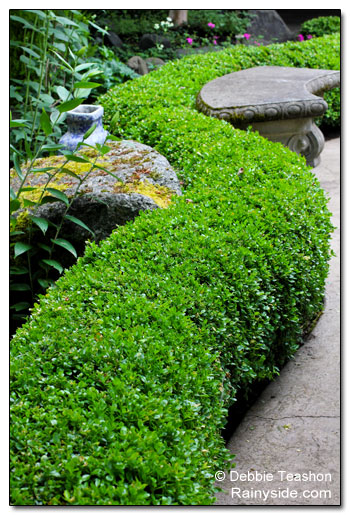
"…we can have more color and be a little wilder because the boxwood keeps the garden tidy."
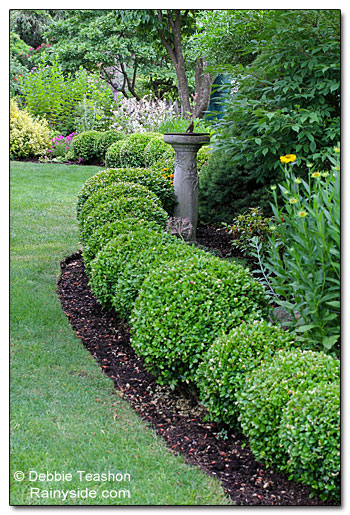
"The boxwood helps define the beds, and gives them order"
Cindy uses large pots extensively for a pop of color or focal points in a border. The oldest pot stands in the knot garden.
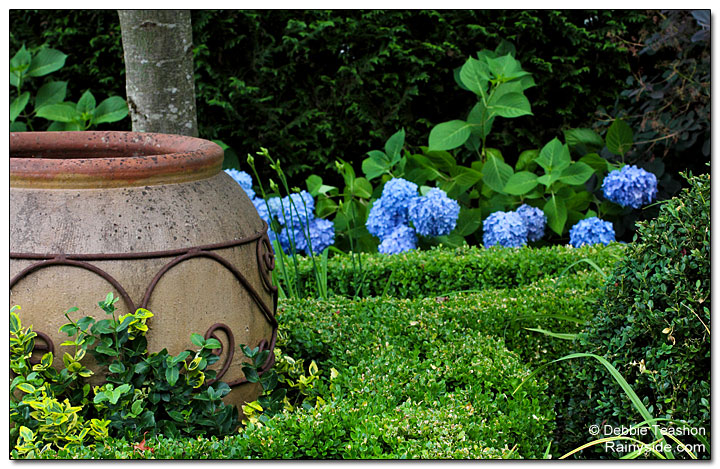
The oldest pot sits as a centerpiece in the knot garden.
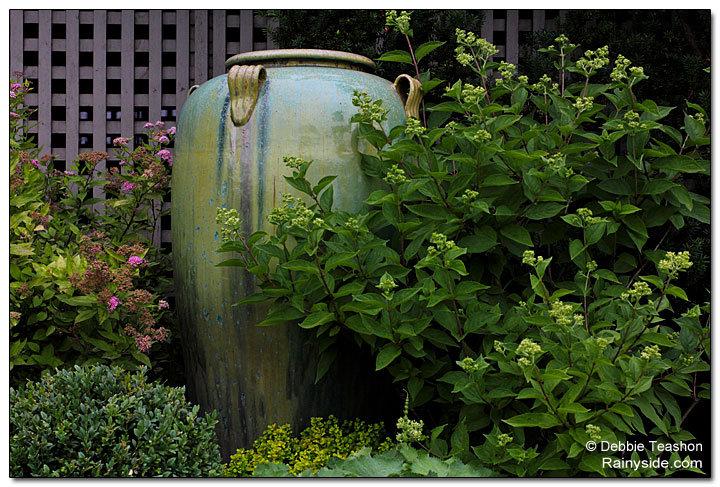
Front view of a blue and green pot below a deck.
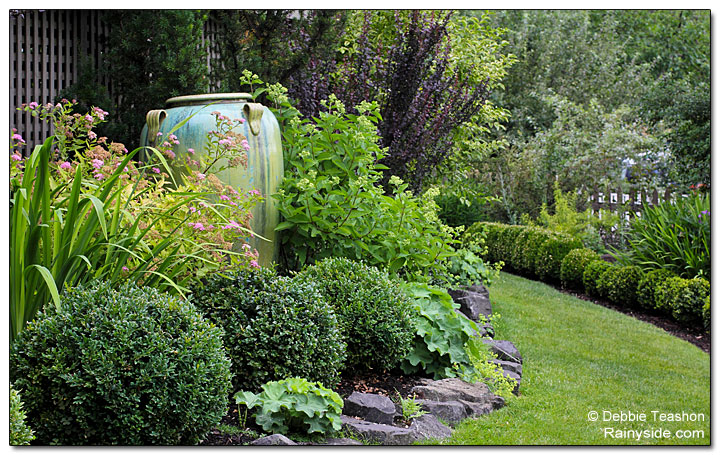
Side view of the same blue and green pot.
Potting Shed
A clever repurposing of many items made the 9 x 7 foot shed that Dave built a charming structure that resides over the back garden area.
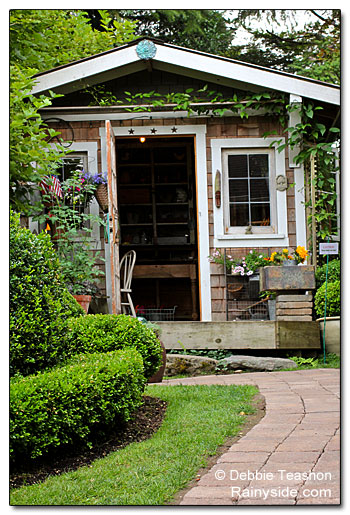
Potting shed
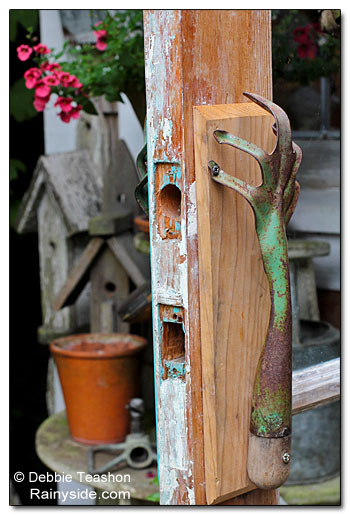
Handles for the potting shed door.
Dave and Cindy collected old windows, including a French door that came from a French barn. When they remodeled their house, they reclaimed the white plank siding and repurposed it for the shed's floors and walls. Recycling items they took out of their home during a remodel, made the shed extra special for them.
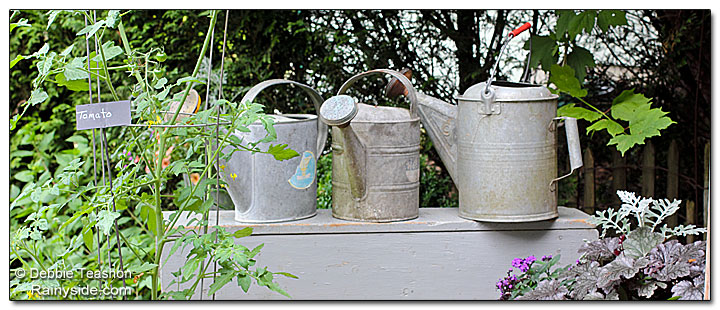
This display is only a portion of an extensive collection of galvanized water cans.
Cindy uses the shed year-round by heating it in the winter. "I really enjoy a place to go out and have a cup of tea out where I can see the garden."
However, the space is much more. "I use it to store my seeds, fertilizers, potting soil — everything. I start plants in there in the spring, because I have those windows right there."
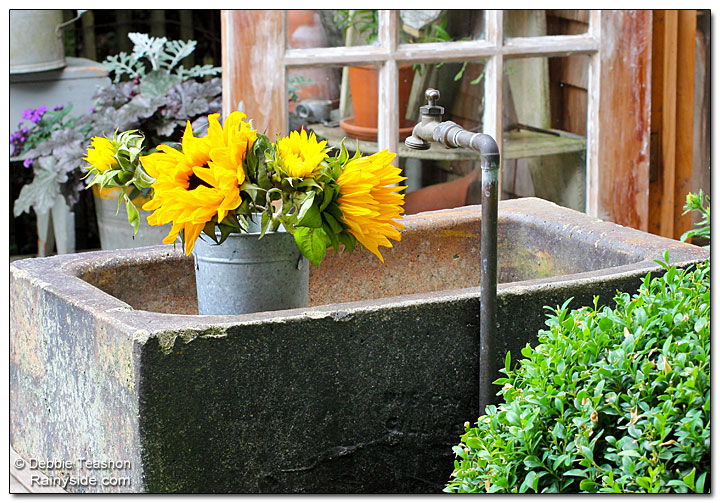
The old, cement trough repurposed as a sink, stands on the shed deck within reach of the door.
One of Cindy's favorite tables in the shed is a potato sorter the couple found by the side of the road. The bins underneath are used for storage. The top made from wood has a sheet of glass over it. The couple sandwiches pictures of the garden and postcards in between. The table is utilized for most of Cindy's prep work.
Water Features
When you walk through the garden, you notice many water features sprinkled around the property.
"We have a busy street out front, so the water features distract you from the street noise," said Cindy. "It's just kind of soothing. We have one up on the deck, and two others in the back, even though it is a much quieter area back there."
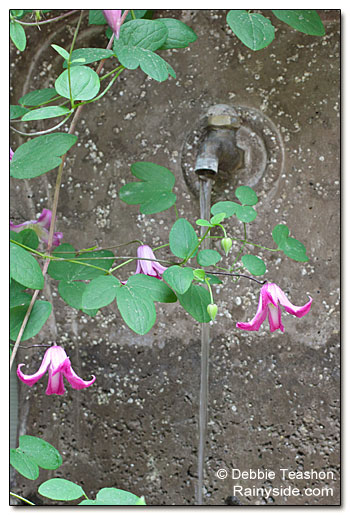
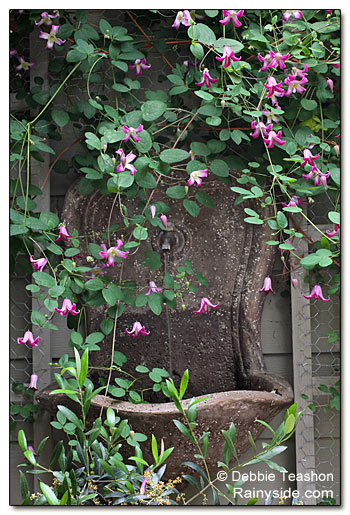
Clematis 'Odoriba' surrounds one of the many water features.
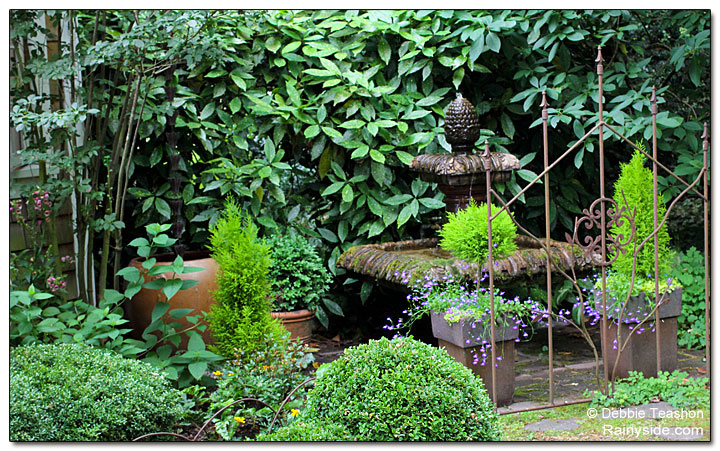
Dave and Cindy enjoy the birds that visit and live in the garden. Although the couple stopped feeding the birds, the pair provide water; and with the shrubs and trees they planted, they've created a bird paradise.
"I don't feed the birds. When I did feed them, it attracted rodents," Cindy explained. "We have the Anna hummingbirds year round, and they love the tiered fountain in the back where our patio is. They belly up to the top of it where the water is moving and love it. They are also very comfortable in our yard. We can be sitting at that table having dinner at night, and they are just right there. The garden supports a lot of birds that nest here in the spring."
Gazebo
The first structure David built on the property was a Gazebo. Behind the out-building grows red and yellow twig dogwood (Cornus sanguinea), and snowberry (Symphoricarpos albus) planted originally for privacy. The gazebo is covered with grapes, and hops, and an unknown rose to soften the corner. Along the fence line, the soil remains wet, so the Storrars looked for plant material that thrive in moist conditions. Besides the shrubby dogwoods and snowberries, they planted blueberries and hydrangeas in the wetter areas of the garden.
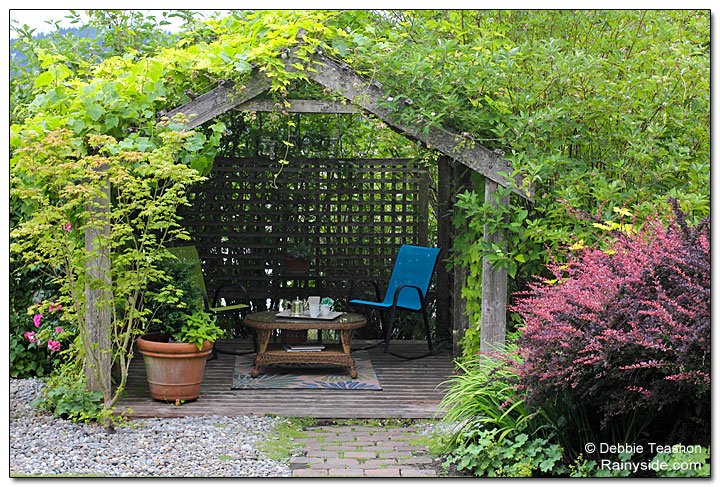
Even though the property is on a busy street, this spot is a quiet respite.
"Almost totally closed, it's like a little cavern," said Cindy about the gazebo. "A candle chandelier hangs from the ceiling, and we keep a couple of chairs and a table down there. When we sit down and look back at the garden, we get a totally different view of the gardens instead of looking out towards the water. It's quiet, even though we're on the busy street side. The plant material muffles some of the sounds. You have to have some of those destinations in the garden where you can sit and enjoy it."
Cindy claims they always want to try something new. This coming season the couple plans to put in some metal troughs for vegetable gardens.
Their long term plans for the garden? Cindy laughed, "No major overhaul plans at this time, but we are gluttons for punishment, we are always coming up with something."
More images of the garden:

Closer view of the oldest pot in the knot garden.
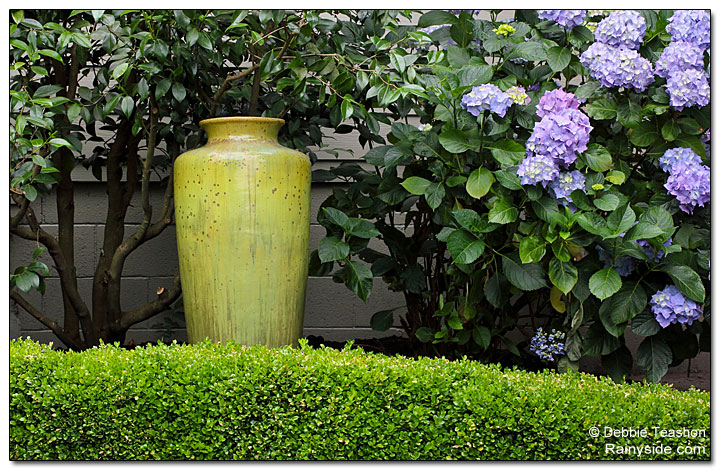
A golden pot compliments the purple-blue hydrangeas.
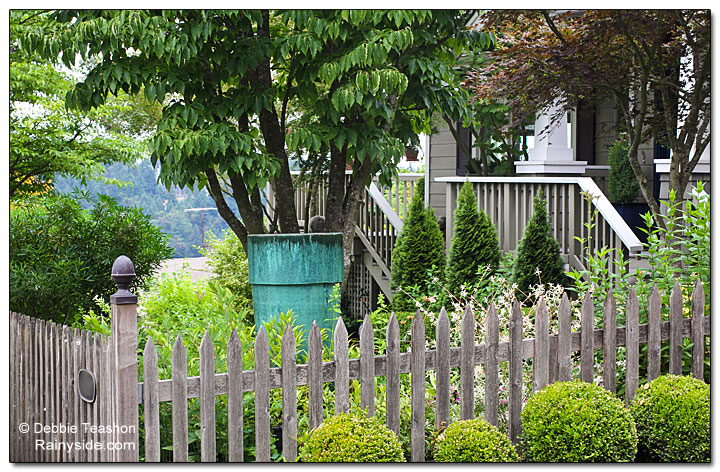
A blue pot view in the front garden.
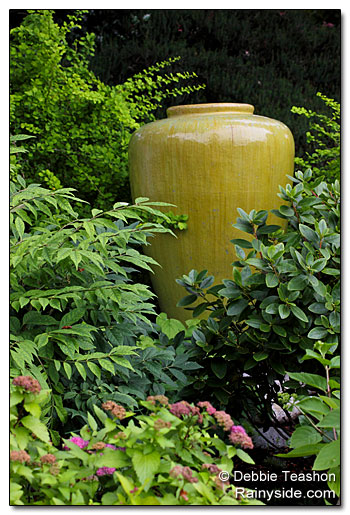
Large, narrow pot becomes a garden focal point.
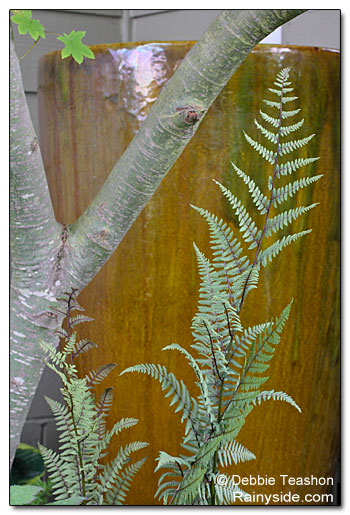
Nestled in with the ferns, a pot sits under a tree.
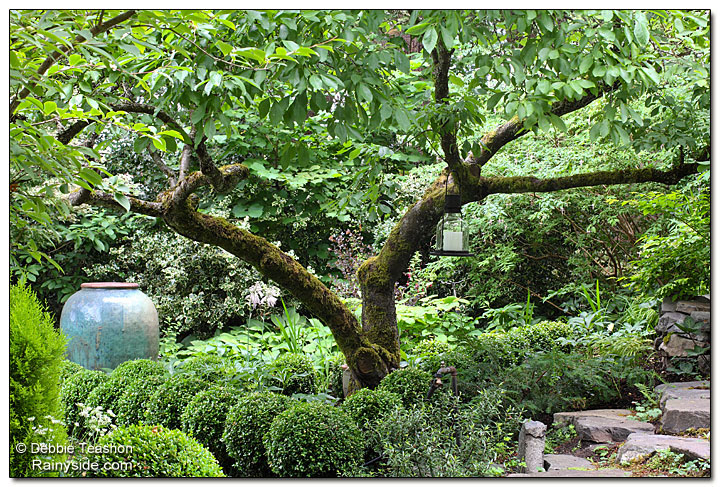
Another large blue pot in the garden.
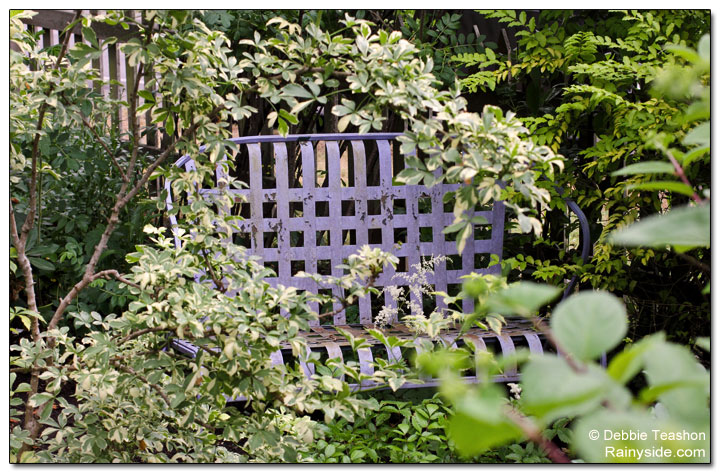
Rustic, lavender-purple bench
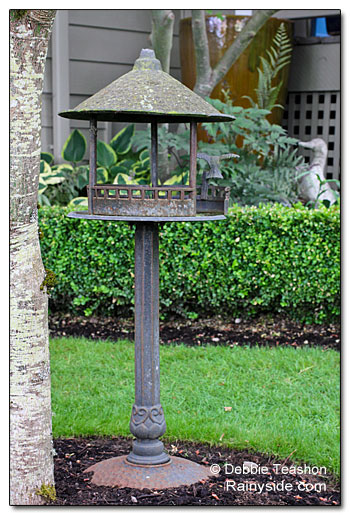
No longer used to feed birds, a bird feeder still lives in the garden.
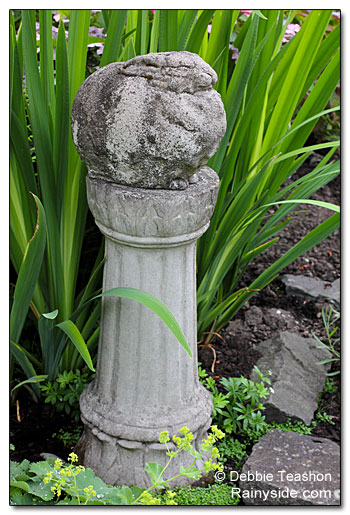
A bunny on a pedestal is one of many whimsical pieces.
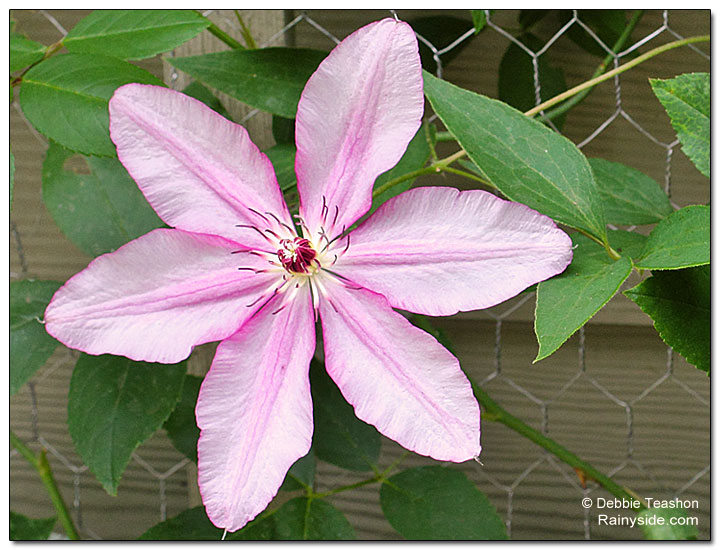
Clematis 'Pink Fantasy'
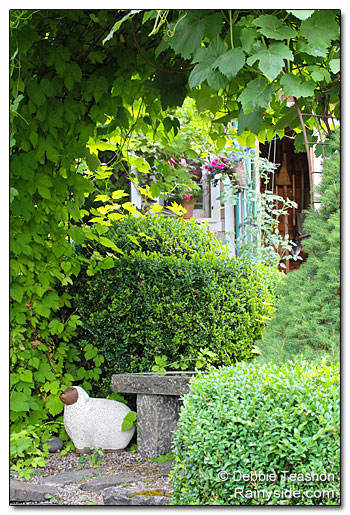
Hop bines and grapevines smother an arbor — a comfortable little niche.
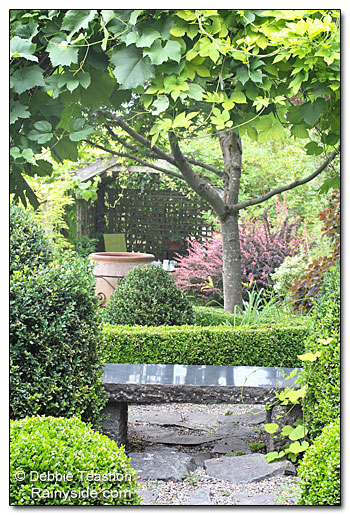
Looking through the opposite view of the same arbor niche.
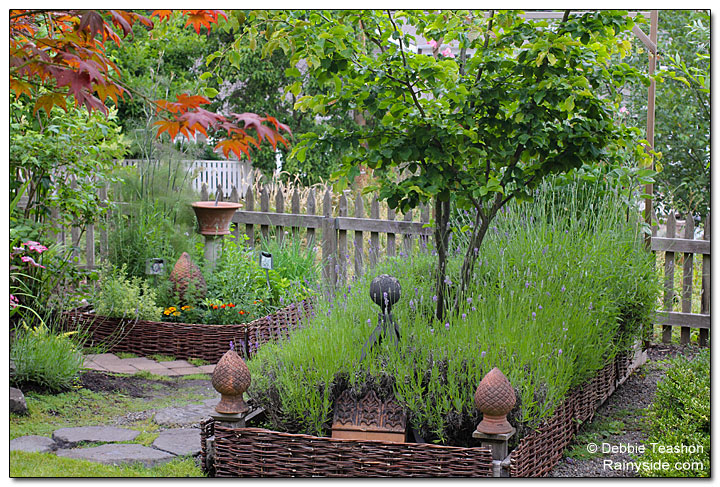
Herb gardens surrounded by a wattle fence.
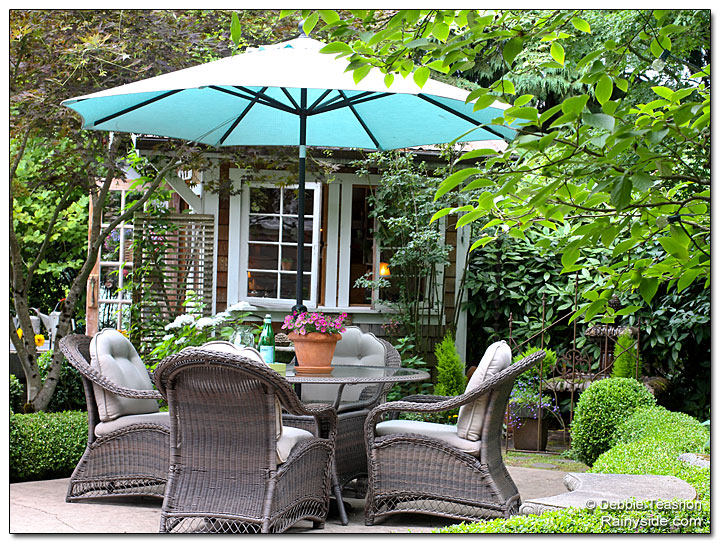
The Storrars use their garden for entertaining. They love being outside in the garden with friends.
Article originally written and published in 2015 from West Sound Home & Garden magazine.
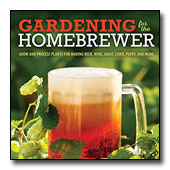
Gardening for the Homebrewer: Grow and Process Plants for Making Beer, Wine, Gruit, Cider, Perry, and More
By co-authors Debbie Teashon (Rainy Side Gardeners) and Wendy Tweton
Copyright Notice | Home | Search | Articles

